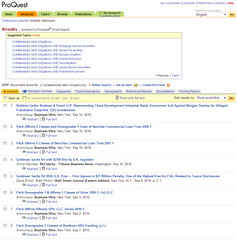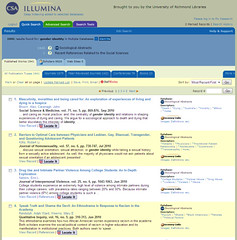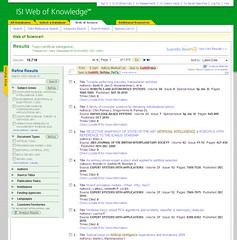Speaker: Dr. Lynn Silipigni Connaway, OCLC
Students, particularly undergraduates, find Google search results to make more sense than library database search results. In the past, these kinds of users had to work around our services, but now we need to make our resources fit their workflow.
Connaway has tried to compare 12 different user behavior studies in the UK and the US to draw some broad conclusions, and this has informed her talk today.
Convenience is number one, and it changes. Context and situation are very important, and we need to remember that when asking questions about our users. Sometimes they just want the answer, not instruction on how to do the research.
Most people power browse these days: scan small chunks of information, view first few pages, no real reading. They combine this with squirreling — short, basic searches and saving the content for later use.
Students prefer keyword searches. This is supported by looking at the kinds of terms used in the search. Experts use broad terms to cover all possible indexing, novices use specific terms. So why do we keep trying to get them to use the “advance” search in our resources?
Students are confident with information discovery tools. They mainly use their common sense for determining the credibility of a site. If a site appears to have put some time into the presentation, then they are more likely to believe it.
Students are frustrated with navigating library websites, the inconvenience of communicating with librarians face to face, and they tend to associate libraries only with books, not with other information. They don’t recognize that the library is who is providing them with access to online content like JSTOR and the things they find in Google Scholar.
Students and faculty often don’t realize they can ask a question of a librarian in person because we look “busy” staring at our screens at the desk.
Researchers don’t understand copyright, or what they have signed away. They tend to be self-taught in discovery, picking up the same patterns as their graduate professors. Sometimes they rely on the students to tell them about newer ways of finding information.
Researchers get frustrated with the lack of access to electronic backfiles of journals, discovering non-English content, and unavailable content in search results (dead links, access limitation). Humanities researchers feel like there is a lack of good, specialized search engines for them (mostly for science). They get frustrated when they go to the library because of poor usability (i.e. signs) and a lack of integration between resources.
Access is more important than discovery. They want a seamless transition from discovery to access, without a bunch of authentication barriers.
We should be improving our OPACs. Take a look at Trove and Westerville Public Library. We need to think more like startups.
tl;dr – everything you’ve heard or read about what our users really do and really need, but we still haven’t addressed in the tools and services we offer to them






